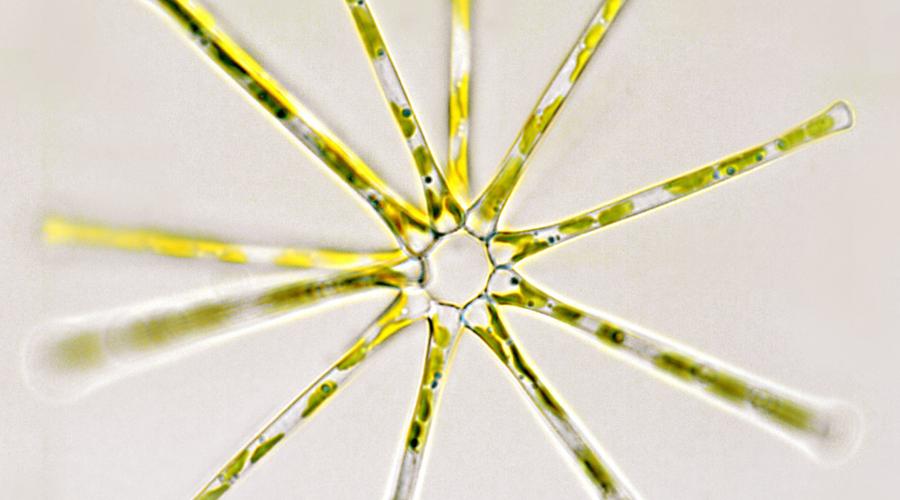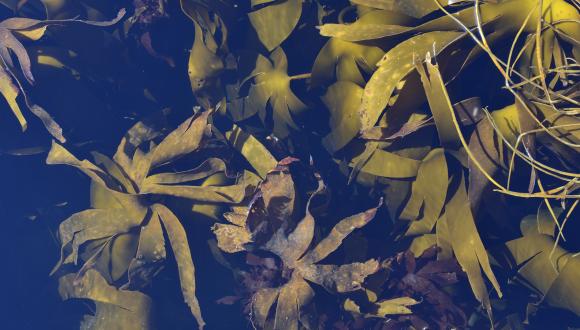
Yellow-brown algae
Yellow-brown algae – or diatoms – are associated with springtime, when the water column contains nutrients and loch water gets thoroughly mixed.
In springtime the water column is mixed, this helps diatoms remain in the light zone. They won’t survive if they sink to darker depths where photosynthesis isn’t possible. Diatoms are also associated with shallow lochs for the same reason.
Diatoms exist in many fascinating forms. Cells of the same species can come together to form attractive chains or star shapes. Increasing their surface area in this way helps to slow the rate at which diatoms sink.
Frustules, the silica shells that encase diatoms, remain in the environment long after the cells have died. Cores of sediments can be taken from a loch and the layers examined for frustules to learn about the loch’s past conditions.
A major project is under way to compile an online tool that describes the diatom flora of Britain and Ireland. So far, only a small proportion of the 2,800 species that occur here have been described. You can follow progress on the Diatom Flora of Britain and Ireland website.




